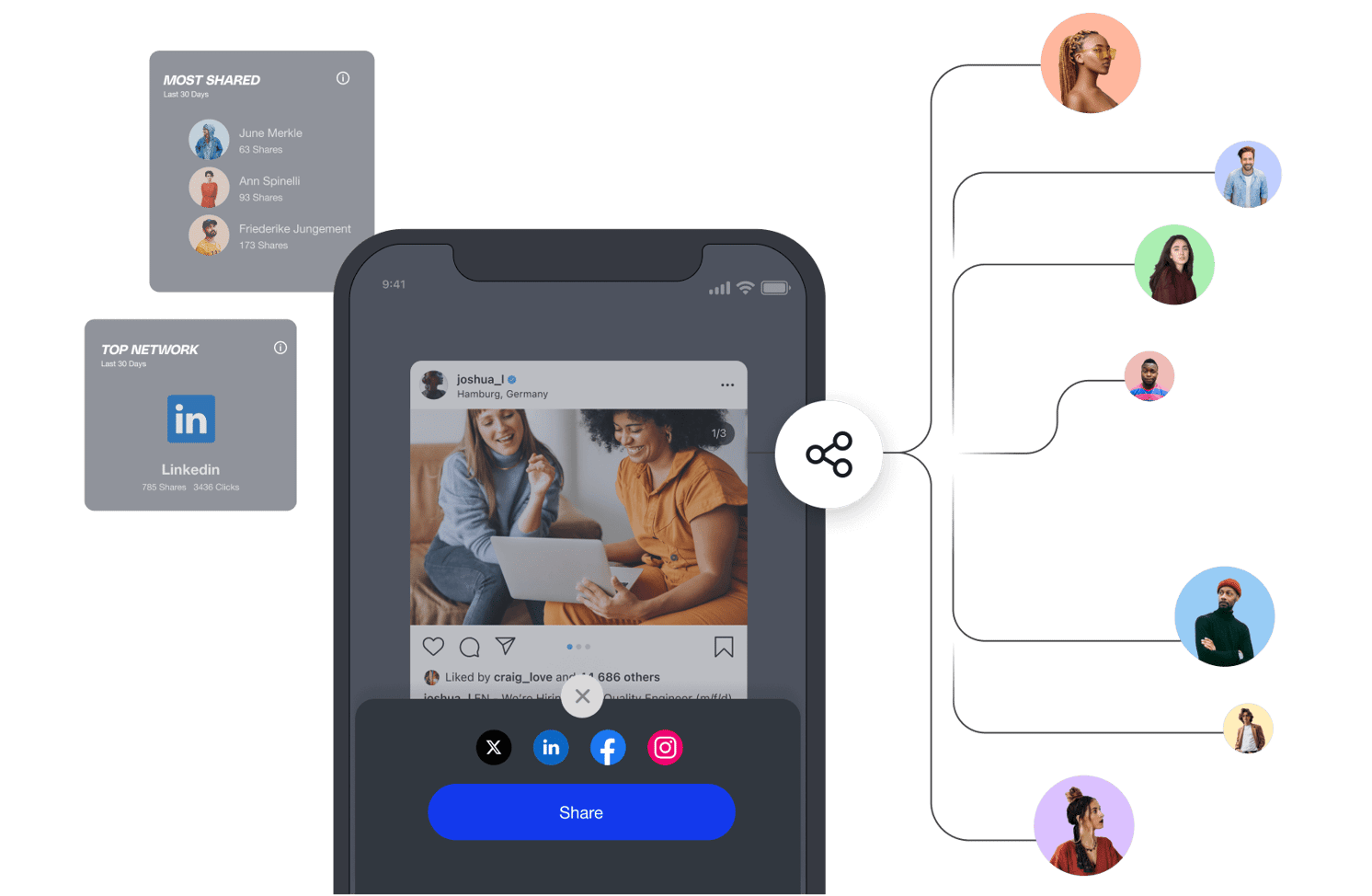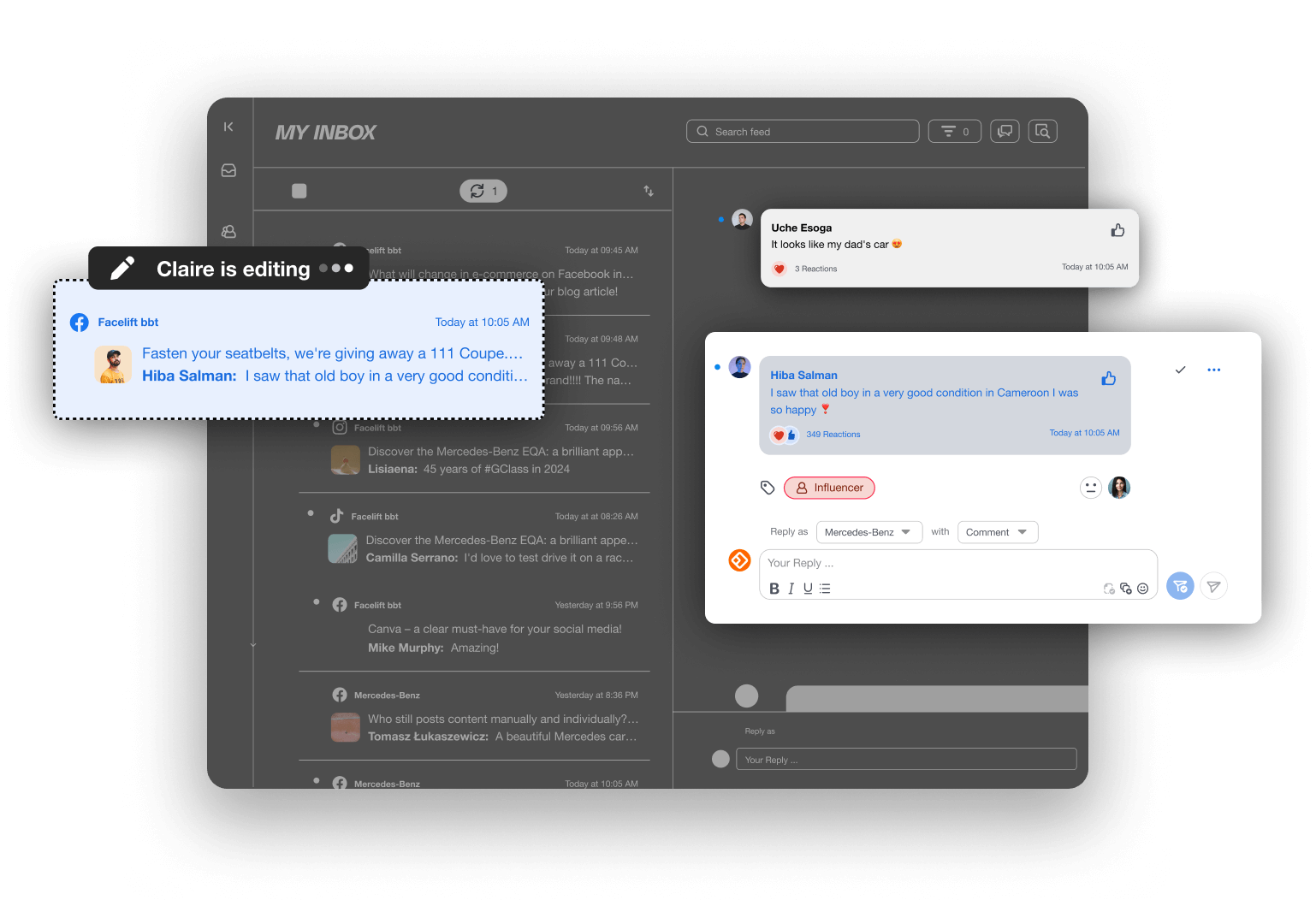SOCIAL MEDIA ORCHESTRATION MANIFESTO
social media orchestration (SMO)
noun
/ˈsoʊʃəl ˈmiːdiə ɔːrkəˌstreɪʃən/
Definition: The strategic coordination and alignment of social media activities, tools, and stakeholders across an organization to ensure consistent messaging, maximize engagement, and achieve overarching business objectives.
Why social media orchestration matters
As social media increasingly dominates corporate communications as a primary channel for modern business engagement, the need for a unified, strategic approach is more critical than ever. Social media orchestration is the modern solution to this need. Going well beyond managing multiple platforms or ensuring that there is fresh content; social media orchestration is about integrating every aspect of social media—strategy, content creation, community management, and performance analysis—into a cohesive framework that drives business goals throughout an organization.
Social Media Orchestration (SMO) is the comprehensive management and alignment of full-spectrum social media activities throughout an organization. Unlike traditional social media management, which often focuses on the isolated tasks of content creation and scheduling, orchestration encompasses the entire lifecycle of social communication. This means every piece of content, every campaign, and every interaction is strategically aligned with the organization's broader goals, resulting in a cohesive and impactful presence on all channels.
The key differences: orchestration vs. management
Social media management typically focuses on content creation, scheduling, and audience engagement. It involves the daily tasks of posting updates, responding to comments, and tracking the performance of individual posts. While these activities are essential, they represent only a fraction of what social media orchestration entails.
Social media orchestration operates on a much larger scale. It involves planning and coordinating content across multiple departments and teams, making sure that all social media efforts are in harmony with the organization’s strategic goals and brand objectives. This includes everything from the initial stages of strategy development and content planning to the final phases of performance tracking, analysis, and content upkeep. Social media orchestration extends far beyond marketing to involve every stakeholder and department in the organization, making it a holistic approach to communication strategy.
THE CORE COMPONENTS OF SOCIAL MEDIA ORCHESTRATION










1. Strategy development:
At the heart of social media orchestration is the development of a robust strategy. This involves defining the overarching goals that social media efforts should achieve, such as increasing brand awareness, driving customer engagement, or supporting product launches. Strategy development also includes identifying target audiences, analyzing market trends, and determining key messages that will resonate with these audiences. We believe it is fundamental in any social media strategy that organizations ensure that their activities are purposeful and effective.

2. Campaign planning:
Campaign planning translates strategic goals into actionable plans. This involves creating campaigns that are directly linked to key business requirements and organizational objectives. Each campaign is meticulously planned, with specific tasks assigned to team members, timelines established, and content editorials and creative personnel aligned with the campaign’s goals. Every piece of content produced must contribute to the success of the campaign and supports the overall strategy.

3. Content planning and publishing:
Content planning is the tactical execution of the strategy, focusing on the creation, scheduling, and distribution of content. This involves organizing content into categories that align with strategic themes, linking content to specific campaigns, and ensuring that it is distributed across the right channels at the right times. Effective content planning also includes the use of properly assigned and curated metadata to guide content creation, making it easier to manage large volumes of content and ensure consistency across all channels throughout the organization.
Companies engaging in social media orchestration must manage content and media assets effectively to maintain consistency and efficiency in their publishing process. Asset management involves proper archiving and organizing content and media files, linking them to specific campaigns and topics, and making them easily accessible for future use. With multiple teams involved in the publishing of content, personnel must be able to quickly find and reuse assets, reducing duplication of effort and maintaining a consistent brand voice across all channels. This requires a robust knowledge management and communication pipeline within the organization.

4. Amplifying voices
Social media orchestration is about leveraging the entirety of your organization to meet social media objectives. This means taking advantage of a large and vocal asset that already exists on social media to help magnify and engage with your brand. The power of employee voices cannot be overstated, and bringing all of these voices together into a unified chorus is at the heart of social media orchestration done right.

5. Topic architecture:
Topic architecture involves organizing communication activities under key strategic themes to ensure consistency and alignment with business objectives. If an organization focuses on product innovation, customer success, and sustainability, all related content—such as blog posts, social media updates, and email campaigns—would be categorized accordingly. This structure helps streamline content creation, making every communication effort supports the organization's overarching goals.

6. User and task management:
Effective orchestration includes a wide range of users, and therefore requires clear roles and responsibilities. User and task management involves assigning roles within the organization, defining permissions, and managing tasks to ensure that all team members know their responsibilities and have the tools they need to succeed. This component also includes workflow management, so that tasks are completed on time and that the entire process is transparent. It also requires user role and permission assignments to keep the scope of responsibilities manageable by content creators and community managers.
A dedicated oversight role for social media orchestration within an organization may be advisable depending on the complexity of organizational structuring and depth of social media needs. This person or small team is generally comprised of communications experts, team leads, senior social media managers, or similar.

7. Channel integration and cross-posting:
To maximize reach and impact, orchestration involves integrated communication channels. Channel integration allows organizations to manage both external platforms (like Facebook, Instagram, and LinkedIn) and internal communication tools (like company intranets or messaging apps) from one place. Cross-posting functionality ensures that content can be simultaneously published across multiple channels, ensuring a consistent message reaches all relevant audiences. It also includes integration with third-party tools such as social listening, analytics tools, content design tools, and more.

8. Community management and moderation:
Within social media orchestration, community management is strategically integrated to align with broader business objectives, and the communication and tone that is projected by it is also part of that strategy. It's not just about handling interactions—it's about using every engagement to reinforce brand messaging. Community management in SMO maintains consistent and meaningful interactions. It also means having a single workspace for personnel engaged in community management, and the capacity to handle responses, comments, and other sorts of interaction at scale across many different platforms.

9. Analytics and reporting:
Data-driven decision-making is essential for refining social media strategies. Analytics and reporting tools provide real-time insights into the performance of communication activities. By tracking key performance indicators (KPIs) and comparing them to strategic objectives, organizations can assess the effectiveness of their social media efforts and make informed adjustments to improve outcomes. Customizable reports allow teams to focus on the metrics that matter most to their specific goals, providing a clear understanding of what is working and where improvements are needed.
Conclusion
Social media has outgrown its historical role as a marketing channel. With orchestration, it is not just about the tactical execution of social media activities but about integrating these efforts into a broader strategic communication mindset. This means that every action, from a single story to a large-scale campaign, is part of a larger, concerted effort to engage audiences, build brand identity, and achieve specific business objectives.
A SOCIAL MEDIA WORKSPACE FOR THE ENTIRE ORGANIZATION

-
ENHANCE YOUR PLANNING AND SCHEDULING
Plan your campaigns and schedule posts across multiple platforms from a single dashboard. Utilize different calendar views to visualize content distribution and ensure consistent messaging. -
CREATE CONTENT SIMPLIF[AI]D
Leverage AI-powered tools to create engaging content. Use Facelift AI to generate content suggestions and automate image adjustments. -
COLLABORATE COMPANY-WIDE
Enhance teamwork with approvals, task management, role-based permissions, and shared workspaces. Facilitate cross-department collaboration, ensuring everyone is aligned with the communication strategy.

-
DRIVE EMPLOYEE ADVOCACY
Empower employees to become brand ambassadors by sharing approved content on their personal social media profiles via Facelift Amplify app. -
EASILY DISTRIBUTE CONTENT ACROSS YOUR NETWORK
Simplify content distribution across multiple profiles and platforms, enhancing the reach and impact of your social media efforts across your large sales distribution, partner- and influencer-network. -
IDENTIFY TOP ADVOCATES & BEST PERFORMING CONTENT
Measure and optimize content and identify your best-engaged advocates who drive impact. Discover which content resonates most with your audience.

-
REACT FAST TO POTENTIAL CRITICAL MESSAGES
Centralize all social media interactions in one inbox. Monitor and respond to messages, comments, and mentions across all platforms efficiently. -
ENSURE QUALITY CUSTOMER ENGAGEMENT
Use pre-defined templates and AI-assisted responses to manage customer inquiries swiftly. Implement tagging and alert systems to prioritize critical messages. -
BUILD YOUR COMMUNITY
All your tools to foster a strong online community by engaging with followers, addressing concerns, and nurturing positive interactions.

-
RETRIEVE HIGH QUALITY DATA
Get comprehensive, real-time analytics and insights, provided by Facelift's powerful Data Layer, responsible for retrieving the most detailed data on the market, to drive the decision-making process. -
ANALYZE YOUR PERFORMANCE
Access detailed insights into the performance of your social media campaigns. Track key metrics such as engagement rates, reach, and conversion rates.
-
OPTIMIZE YOUR CONTENT STRATEGY
Compare your performance against competitors and industry standards. Identify areas of improvement and optimize your strategies accordingly.
STAY AHEAD OF THE CURVE
Social media never stands still. Stay current on the latest info to optimize your social media campaigns.
Request a
demo today
Discover social media orchestration at its finest. Receive a custom-tailored introduction to Facelift, see how it can activate your company's potential, and find your success on social.
Find out about:
Orchestration
Streamline every aspect of your social media strategy end-to-end.
Collaboration
Empower your team with advanced collaboration, flexible user controls for complex team structures, and data security compliance.
Powerful analytics
Leverage robust data capabilities to track KPIs with precision and inform decisions that drive your social media presence.



